Mamak Mee Goreng Recipe uses fresh yellow noodles fried with tofu, veggies, meat or shrimp and tossed with a blend of delicious sauces in a hot wok. This fried noodle dish is sweet from the kecap manis, sour from soy sauce and spicy from the homemade sambal!
One of the first things I tried when I visited Singapore and Malaysia as a teenager was the Mamak Mee Goreng. My friend took me to a local eatery where she ordered this dish from a food stall serving a variety of dishes including Rujak, pratas, and Murtabak. I was in love with this famous spicy fried noodle. As fast street food goes, this dish provided a veritable explosion of taste, textures, and contrasts that very few dishes provide. Since then, this has been my go-to dish whenever I visit Malaysia or Singapore.
What is Mee Goreng?
Mee Goreng is fried noodles. Now while my version uses shrimp as the primary protein, my first interaction of the Mamak Mee Goreng used finely cut goat meat. I am guessing that this is a leftover from cooked goat from a curry or masala. My Mamak Mee Goreng recipe uses the original ingredients to make an authentic dish. Some chefs use tomato paste or even ketchup as a primary ingredient. Quite honestly, I find that while this is convenient, the ketchup infused with curry or chili powder does not recreate the flavor profile of the authentic spice mixture.
Origin of the Mamak Mee Goreng recipe:
As far as gastronomic history goes, the Mamak Mee Goreng recipe is probably the most profound expression of fusion Asian cuisine. ‘Mamak’ is a transliteration of the Tamil term ‘Mama’ which means uncle. ‘Mee’ is the Malay word for noodles, and ‘Goreng’ means fried. Put it together and you get “Indian fried noodles”. This reflects the culinary adaptation of the Indian diaspora and their treatment of East Asian noodles. The ingredients also reflect the history of European colonization using tomatoes and potatoes. It also reflects a veritable Asian heritage in its use of soy sauce and tofu (China), kecap manis (Indonesia), curry leaves or curry powder (India) and the application of tamarind (all over South and Southeast Asia) for the sweet and sour finish.
Frequently Asked Questions:
- Is ketchup a necessary ingredient in this recipe to get the red hue?
Some chefs in Singapore and Malaysia use ketchup which contributes to the red hue in the mee goreng merah.
2. What type of noodles can I use?
I have used fresh yellow noodles, but you could also use chow mein, spaghetti, egg or pancit noodles.
3. What is the difference between mee goreng and nasi goreng?
Nasi Goreng is rice fried with a spice paste, eggs and shrimp or chicken, while Mamak Mee Goreng is noodles fried with veggies, meat and sauces.
If you’ve tried this recipe or have questions, I would love to hear from you. Please feel free to share (below) your thoughts, comments, or any questions that you might have. And if you like my recipes, you could subscribe to my mailing list for the latest recipes that will be delivered straight to your inbox. From my pen to your table, Bon Appetit!
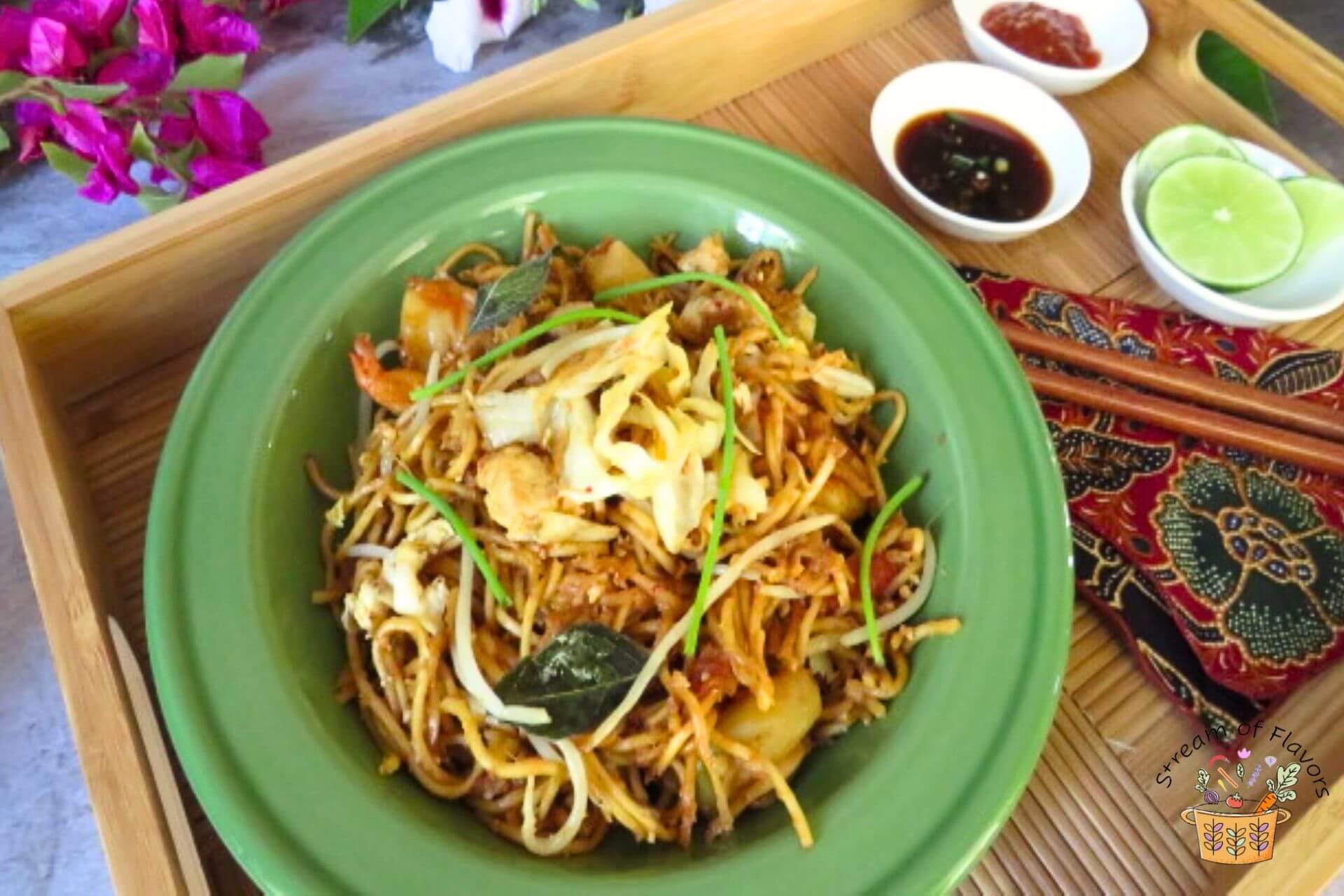
Ingredients:
- Noodles: fresh yellow noodles; feel free to use pancit or chow mein noodles
- Spice paste: dried shrimp, dried red chili, and garlic (homemade sambal)
- Protein: shrimp; feel to to use cooked and shredded lamb that is more common, egg is optional
- Veggies: cherry tomato, potato, mung bean sprouts and cabbage for garnish
- Herb: curry leaves
- Sauce mixture: soy sauce, dark soy sauce, kecap manis and tamarind pulp with curry powder
Here are the step-by-step instructions on how to make this dish. Please refer to my recipe card for the measurements.
How to make the Mamak Mee Goreng using my recipe:
- Heat a wok with the peanut oil. Add a clove of crushed garlic and the curry leaves. Sauté for a few seconds and add the shrimp and stir fry for 2-3 minutes. Push the shrimp to one side of the wok and add the tofu and fry on high heat for a minute.
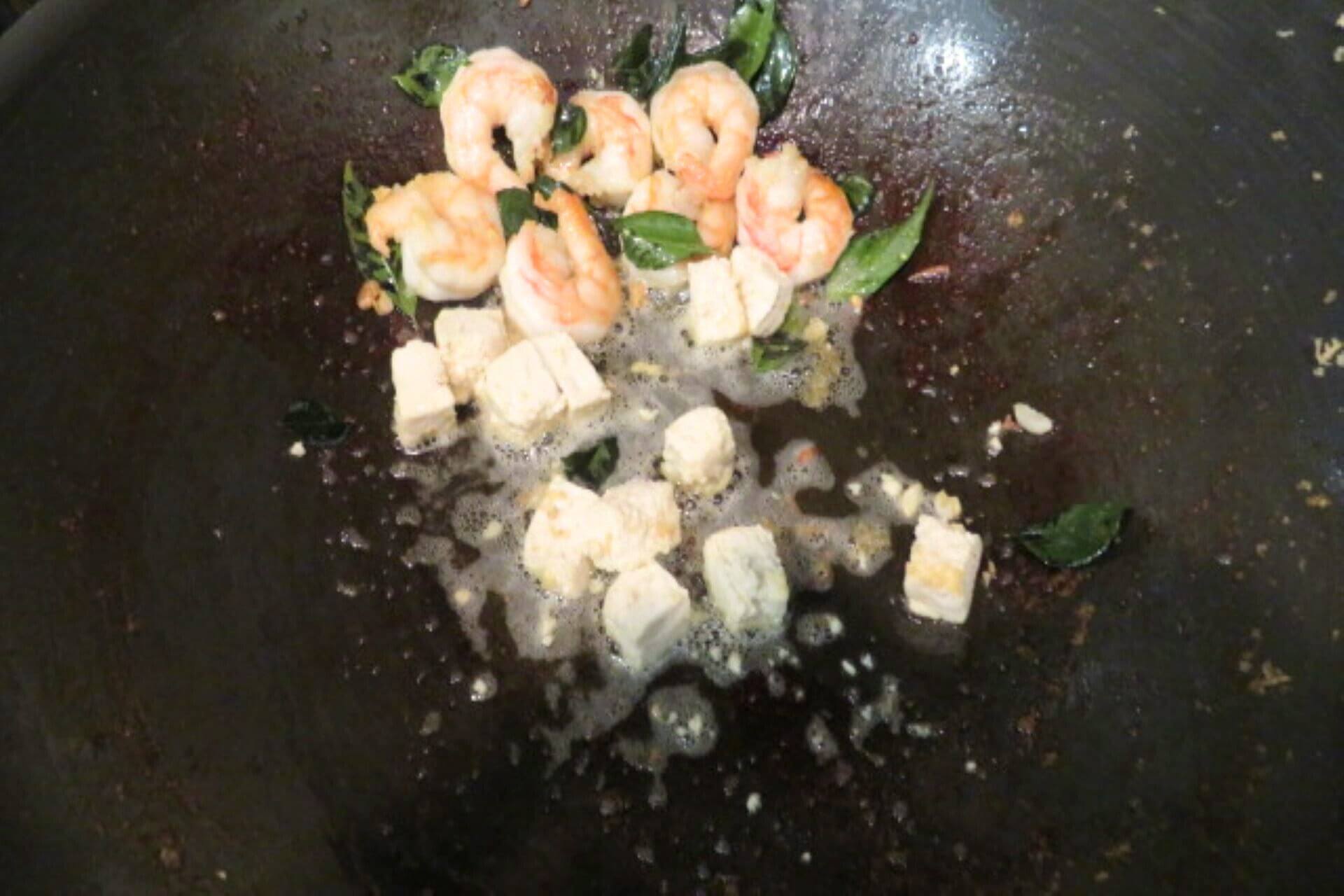
2. Push the ingredients to one side of the wok, and add a spoonful of oil if it gets sticky. Add the spice paste and fry until fragrant for 1-2 minutes. Add the potato and the cherry tomato and stir briefly.
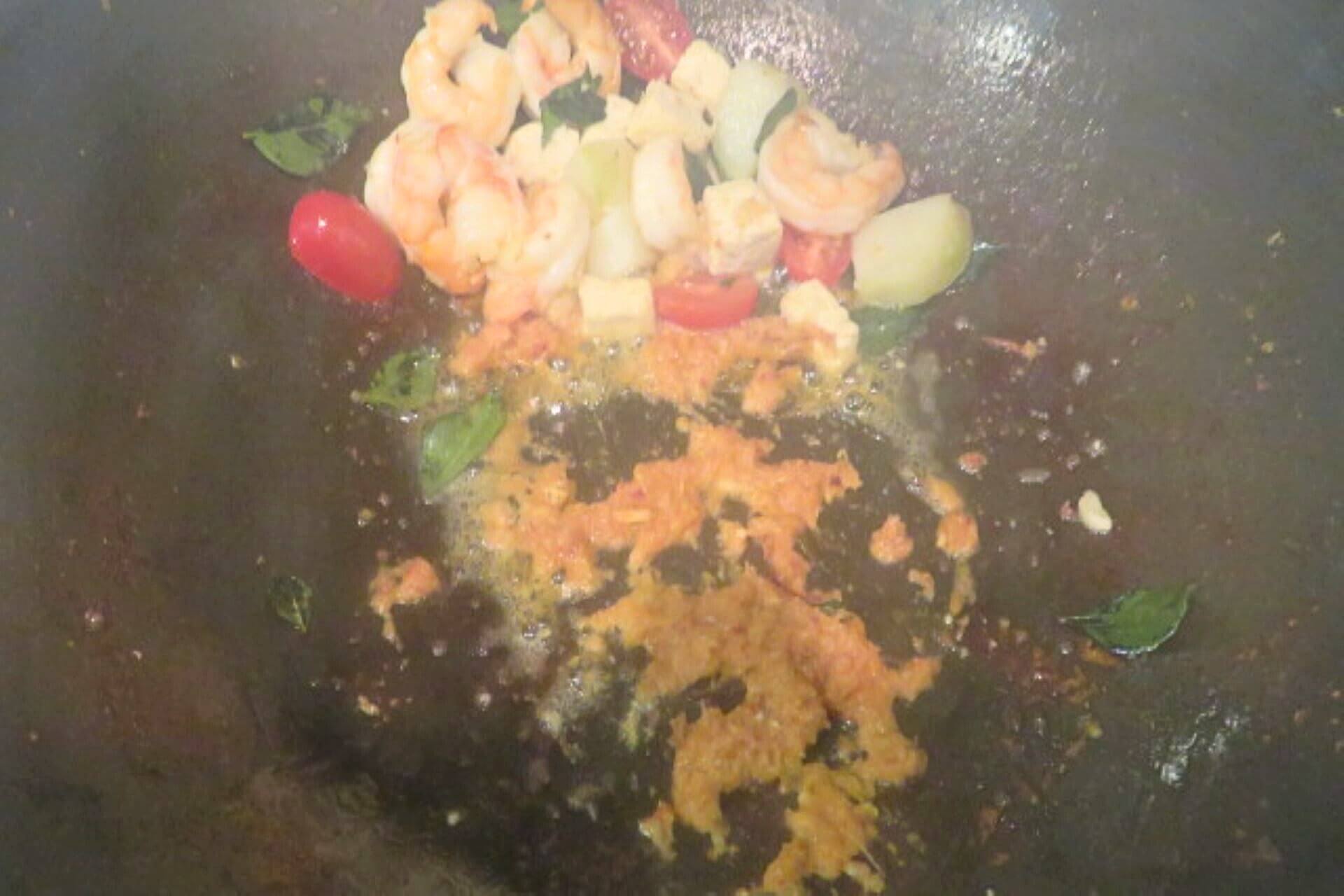
3. Now, add the cooked and drained noodles (al dente). Stir fry for 1-2 minutes and then add the sauce mixture and combine them well. Optionally, break an egg on one side of the wok and cover the egg with the noodles for a minute. Then, break the egg apart and stir fry using quick wrist movements.
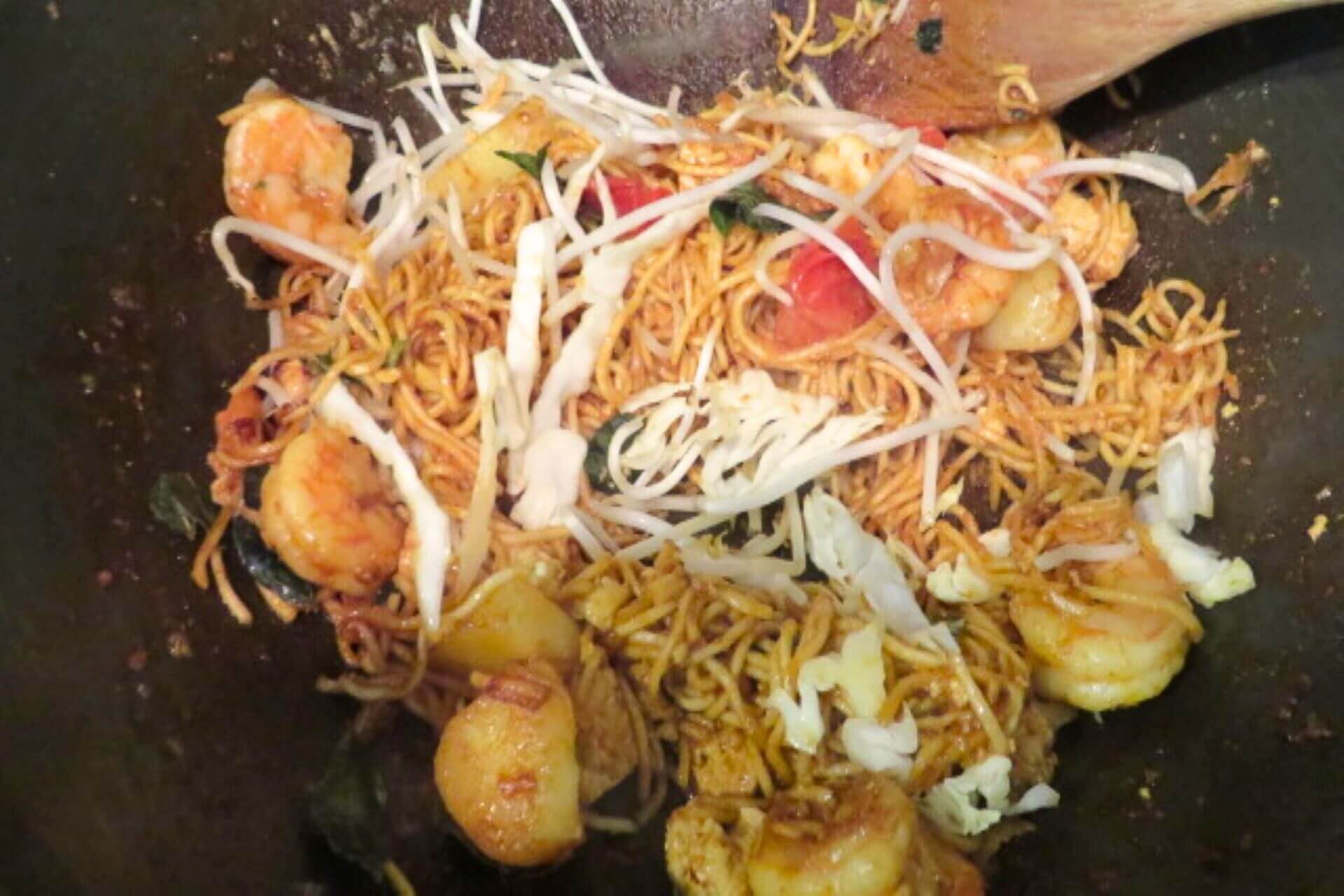
4. Add the bean sprouts and garnish with shredded cabbage on top. Serve hot with a wedge of lime on the side.
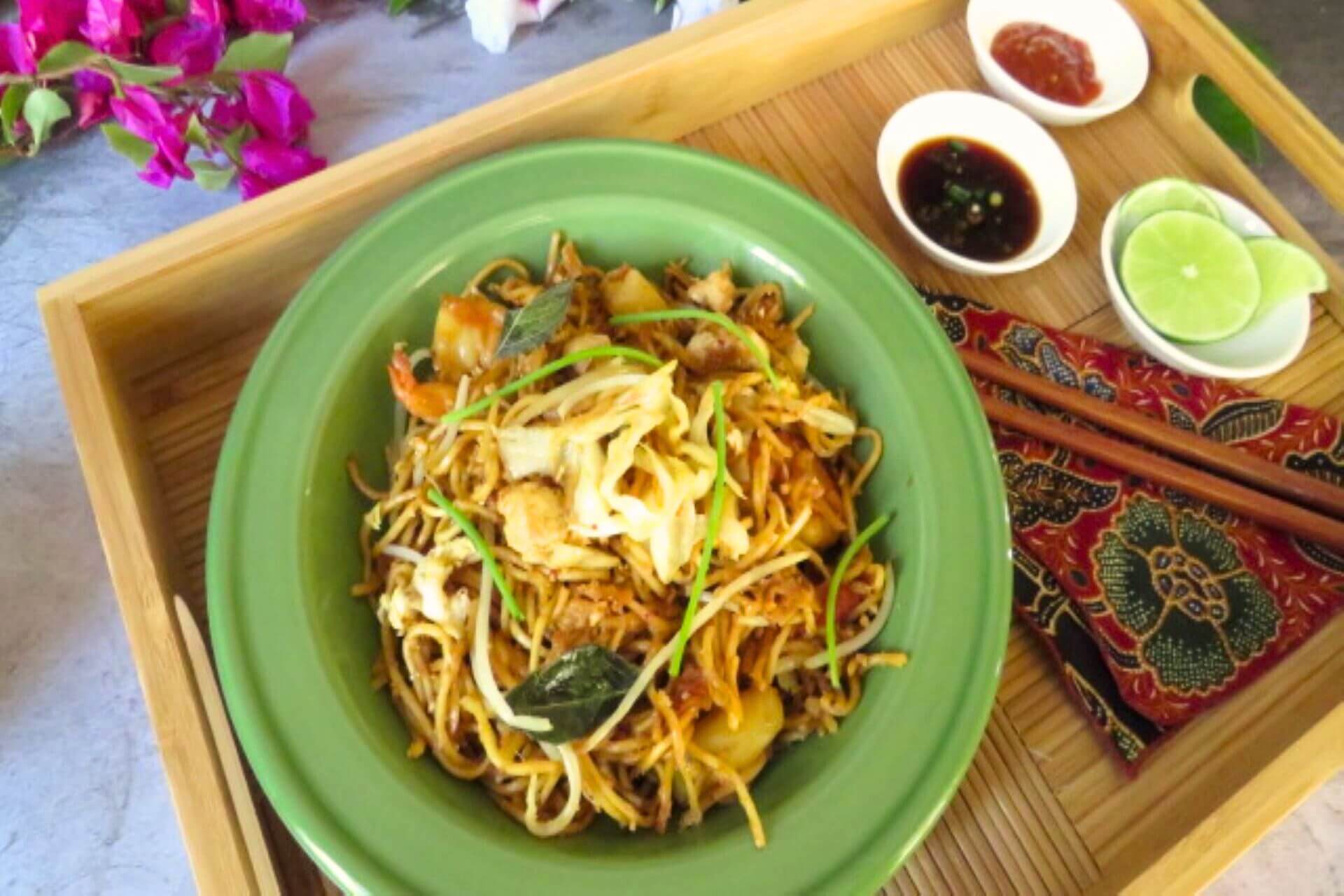
Tips:
- One of the tricks that is used to make this fast-cooked dish is the use of peanut oil in a large wok over high heat. The use of peanut oil is mostly the result of Malaysia’s history as a peanut producer. Peanut oil used in stir fry makes sense because it is stable at a high temperature and has a relatively higher smoke point. In addition, it adds a subtle nutty flavor to this dish. That said, be purposeful in the use of peanut oil because it is a source of Omega-6 which can cause inflammation and other side effects.
- Woks generally come in 2 shapes. Given that the recipe for the Mamak Mee Goreng is a noodle dish fried in a liquid paste, the round-bottomed wok is more appropriate because it allows the sauce to mix and the ingredients to be heated in one spot before coating the noodles. The high-sloping walls retain and distribute the heat over the larger cooking surface. The high walls prevent the dish from flying off the container.
- High heat is a basic requirement for this dish. High heat enables fast cooking but is also responsible for the ‘wok hei’ effect. A talented cook can also twist the wok enough so that a bit of the flame catches the peanut oil for that slightly charred finish that adds to the crispness, flavor, and dry mouth feel that is the signature of a well-made Mamak Mee Goreng recipe.
Serving suggestions:
I like to serve this recipe of the Mamak Mee Goreng with shredded cabbage on top and a lime wedge on the side. It is also served with some cut chili in a small bowl with soy sauce. A shower of makrut lime juice and fried onions on top is yet another option to serve this delicious fried noodle dish.
Storage:
Mamak Mee Goreng can be refrigerated for a day if using shrimp and for 3-4 days if using lamb or chicken. This dish can be frozen for 3 months in airtight containers. To reheat the noodles, thaw at room temperature and refry the noodles with an egg and some peanut oil.
Other noodle recipes that you might like:
Mamak Mee Goreng Recipe
Equipment
- Wok
Ingredients
- 2 tbsp peanut oil
- 8 curry leaf
- 1 lb shrimp peeled and deveined
- 1 pack tofu firm, cut into bite-sized cubes
- 2 tbsp dried shrimp
- 4 dried chili
- 5 clove garlic
- 4 cherry tomato
- 1 potato cooked, peeled, cut into bite-sized cubes
- 1 lb fresh yellow noodles
- 1 cup mung bean sprout
- 3 tbsp kecap manis
- ¾ tbsp tamarind pulp
- 1 tbsp curry powder
- 2 tbsp dark soy sauce
- 1 tbsp soy sauce
- 3 egg
- 2 petal cabbage shredded for garnish
- 1 lime
Instructions
- Prepare the ingredients: cook the noodles per package instructions; add the garlic, dried chili, and dried shrimp soaked in 2 tablespoons of water for 10 minutes to a spice grinder and grind until smooth; peel, devein, rinse and drain the shrimp; and make the sauce mixture by mixing the soy sauce, dark soy sauce, kecap manis and curry powder with the tamarind pulp in a bowl and keep aside. Heat a wok with the peanut oil. Add a clove of crushed garlic and the curry leaves. Sauté for a few seconds and add the shrimp and stir fry for 2-3 minutes on high heat. Push the shrimp to one side of the wok and add the tofu and fry on high heat for a minute.
- Push the ingredients to one side of the wok, and add a spoonful of oil if it gets sticky. Add the spice paste and fry until fragrant for 1-2 minutes. Add the potato and the cherry tomato and stir briefly.
- Now, add the cooked and drained noodles. Stir fry for 1-2 minutes and then add the sauce mixture and combine them well. Optionally, break an egg on one side of the wok and cover the egg with the noodles for a minute. Then, break the egg apart and stir fry in quick wrist movements.
- Add the bean sprouts and garnish with shredded cabbage on top. Serve hot with a wedge of lime on the side.
Notes
- High heat will help char the noodles a little bit. Please add a little oil when necessary, especially when the ingredients start sticking to the wok.
- Some chefs like to add greens such as bok choy, choy sum, kankong or even spinach to the noodles.
Nutrition

This post may contain affiliate links. For more information, please read my Disclaimer.

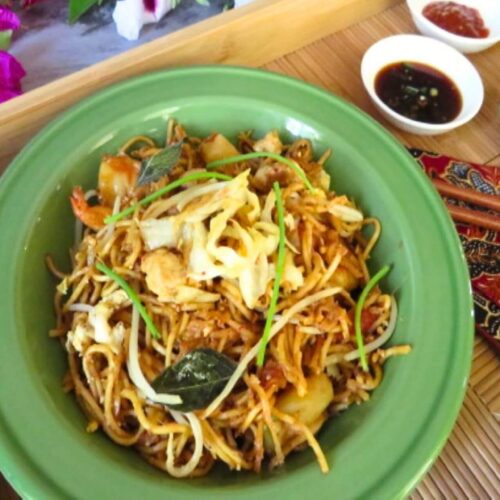
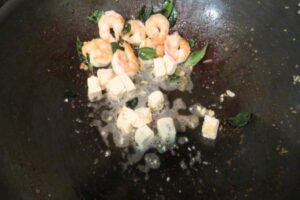
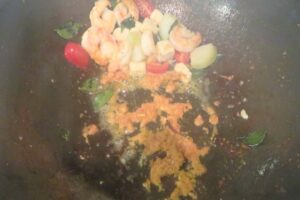
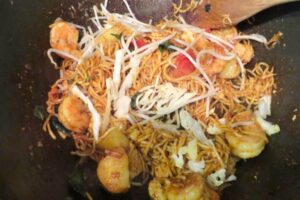
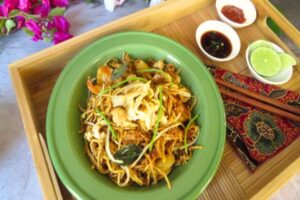





















0 Comments